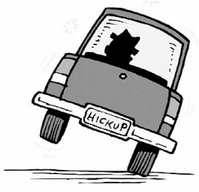Drinking and driving are never good friends
Published: Sunday | June 28, 2009

Drinking affects your thinking. There are certain things you should not do behind the steering wheel, and plain common sense will tell you that to drink and drive is one of them.
Alcohol and the driving process share nothing in common. Alcohol acts first by deadening the nerves of the brain to relieve physical and mental tension. If some persons seem clear-headed after a drink, this is only because they are so tense and self-conscious that without a sedative they are inhibited.
"Do not under any circumstance mix drinking with driving," advised Dr Hame Persaud. "It slows the driver's reaction time." According to Dr Persaud, alcohol may make some persons feel good, but it may give them a false sense that they can do anything.
The First United Nations Global Road Safety week toolkit makes the point that "alcohol consumption increases both the likelihood of a crash occurring and the seriousness of the injury sustained."
It is often suggested that in Jamaica the festive season is year-long and motorists are implored that if they drink they should not drive. According to the Road Safety Unit, driving while intoxicated is an offence which can earn the driver four demerit points. The unit added that if convicted for drunk driving, the driver's licence of the offender would be suspended for 12 months. The unit said the worst possible outcome is that someone, the driver or other road users, could be killed.
The Advanced Driver Training Centre (ADTC) said that alcohol is a drug and a depressant that affects the entire nervous system. The centre points out that all drugs affect physical and mental capabilities. Some capabilities affected are: judgement, awareness, vision, hearing and response time.
"One cannot hide drunk driving," Kurt Harding, a St Andrew-based auto mechanic, said while adding that impaired drivers usually drift and tap regularly on the brakes.
Here are five telltale signs to that will tell you that someone is drunk:
1 Quick stops: A drunk driver may make sudden stops at a traffic sign or light, rather than easing up to it. This type of driving can cause accidents without the drunk driver being directly involved.
2 Speeding: A drunk driver often thinks he or she can drive safely at high speeds. "If you ever meet a drunk driver on the roads both of you will end up in hospital," says Sadie Wisdom, guidance counsellor.
3 Slow driving: A drunk driver may be overly cautious and drive slower than the normal traffic flow.
4 Jerking motion: A drunk driver may often have short mental lapses and may not keep a steady speed on a clear road.
5 Weaving: Even though a drunk driver may remain in the left lane, he or she may have trouble steering straight.
May we employ the collision prevention formula and drive safely while recognising the hazards, understanding the defences and acting correctly in time.
